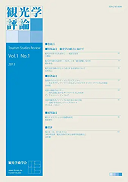According to Ian Reader (2014), a recent characteristic of modern pilgrimages is the fulfillment of the pilgrims’ private and individual desires, as opposed to the fulfillment of something that is expected of them by their religious organization or sect. Moreover, holy places also offer the fulfillment of such desires in many ways, an important one of which is the selling of commodities related to pilgrimage.
In the case of Islam, Hajj differs in character from the other pilgrimages that Reader considered. First, it is difficult for ordinary Muslims to make the Hajj due to its long waiting time and high costs. Second, unlike what Reader mentioned, in order to accomplish the Hajj, one must comply with Islamic law, which decides its details. However, the Hajj and Mecca have also been influenced by market forces in a way that does not contradict the law, like other pilgrimages. For example, shopping for commodities related to Mecca is one of the most important factors for Hajj pilgrims. In addition, ordinary Muslims who cannot visit Mecca also indulge in the consumption of such commodities. Interior ornaments related to Mecca are common in ordinary Muslim spaces. They are thus important, as they enable Muslims who live far away from Mecca to consider their relationship with the holy place and also keep them interested in Hajj. This paper aims to examine the commodification of holy places by analyzing the case of interior ornaments in Tunisia.
Fieldwork at 110 ordinary Muslim spaces in a village in south Tunisia over two years showed that there are 348 Islamic interior ornaments, including ornaments with designs related to the holy place, and 594 normal ornaments. Almost all Islamic interior ornaments are calendars containing advertisements for companies that distribute them for free to their customers. The sponsors of these advertisements use the Mecca symbol because almost all costumers like this symbol and because the calendars then cannot be discarded as they contain the holy symbol. This is why Islamic calendars are widely spread in ordinary Muslim spaces. However, Muslims in the Tunisian village bother to treat it as a holy symbol after a few years passed, because it is prohibited to discard them, although they no longer inform them about dates. Therefore, some of them cut and discard the advertisement and the date portion of the calendar, keeping only the holy part. Further, in Tunisia, some studios specialize in framing these cutout parts of the calendars, which the people can then keep and put in their spaces.
This case showed that most of the circulated Islamic interior ornaments in Tunisian village are calendars that are mass produced and distributed for free. This means that the symbol of Mecca is comparable to an advertising tool. However, unlike other ornaments, some Muslims avoid discarding ornaments with this symbol, and therefore, it is commoditized and mass produced to a limited extent. Such ornaments are not only mediators between the holy place and ordinary spaces, but they are also themselves holy through those process. Ordinary Muslims who cannot visit Mecca reform the Islamic calendars with the Mecca symbol, and these processes also reformulate those places as holy.
View full abstract
